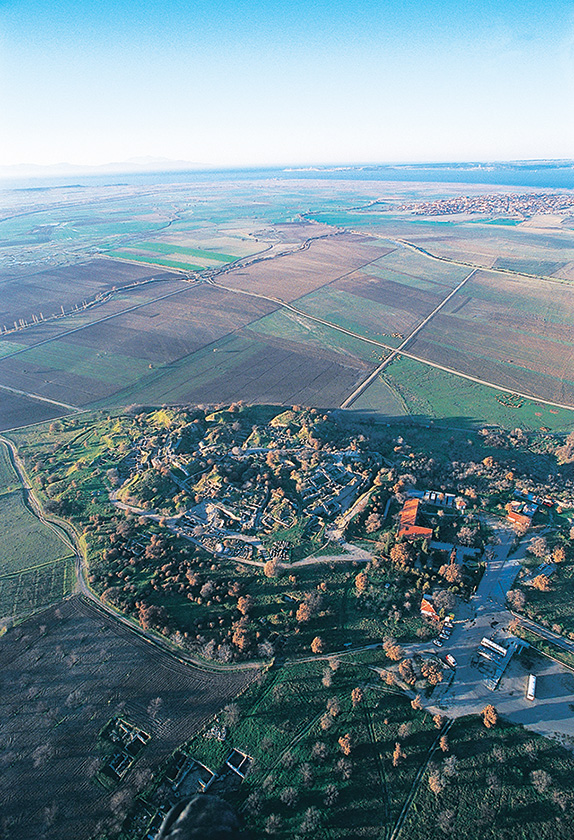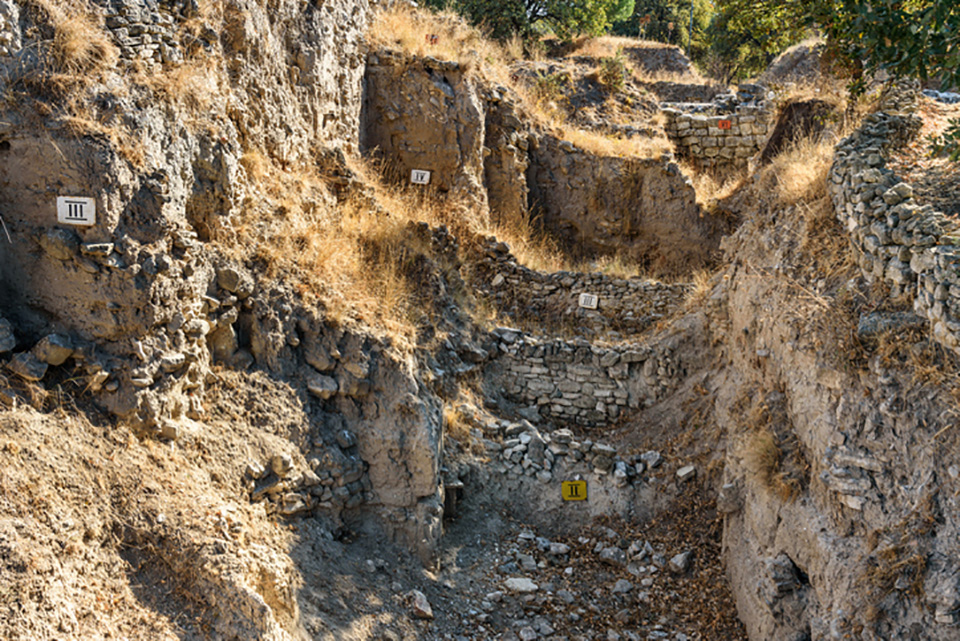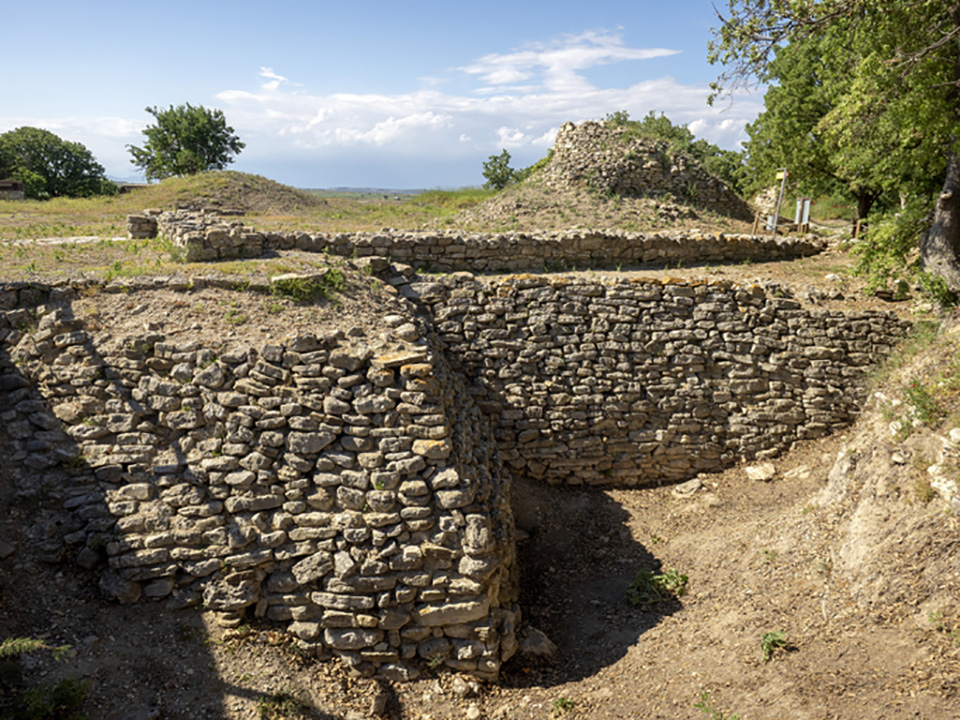
The oldest settlement at Troy dates to the end of the fourth millennium B.C. It was founded on a small hilltop near an inland lagoon of the Dardanelles, a narrow strait connecting the Sea of Marmara with the Aegean and Mediterranean Seas. While today the shoreline lies around four miles away, in antiquity Troy’s proximity to the sea was an important part of its history, enabling its inhabitants to engage in profitable maritime commerce. As Troy I developed, the city prospered to such a degree that strong fortifications were necessary to ensure its safety.

It has been very difficult to view the ruins of the first Trojan settlement because they lie buried beneath almost 45 feet of debris that covers the citadel, or hilltop of Troy. However, archaeologists have been able to glimpse enough of the earliest city in order to formulate some ideas about what the site may have looked like at the dawn of the Bronze Age.

The original Troy was a very small city, measuring only around 280 feet by 310 feet. However, it was surrounded by a very sturdy defensive wall, which included gates and towers. Several small simple houses which usually contain a single elongated room, have been unearthed, as well at least one megaron-style structure. Troy’s earliest inhabitants engaged in agriculture, animal husbandry, and fishing, and also maintained some contact with cultures across the sea. They used simple handmade pottery. Molds for bronze knives and chisels seem to indicate that these early Bronze Age Trojans already had some knowledge of bronze-manufacturing technology. Troy I was destroyed by a fire around 2550 B.C.